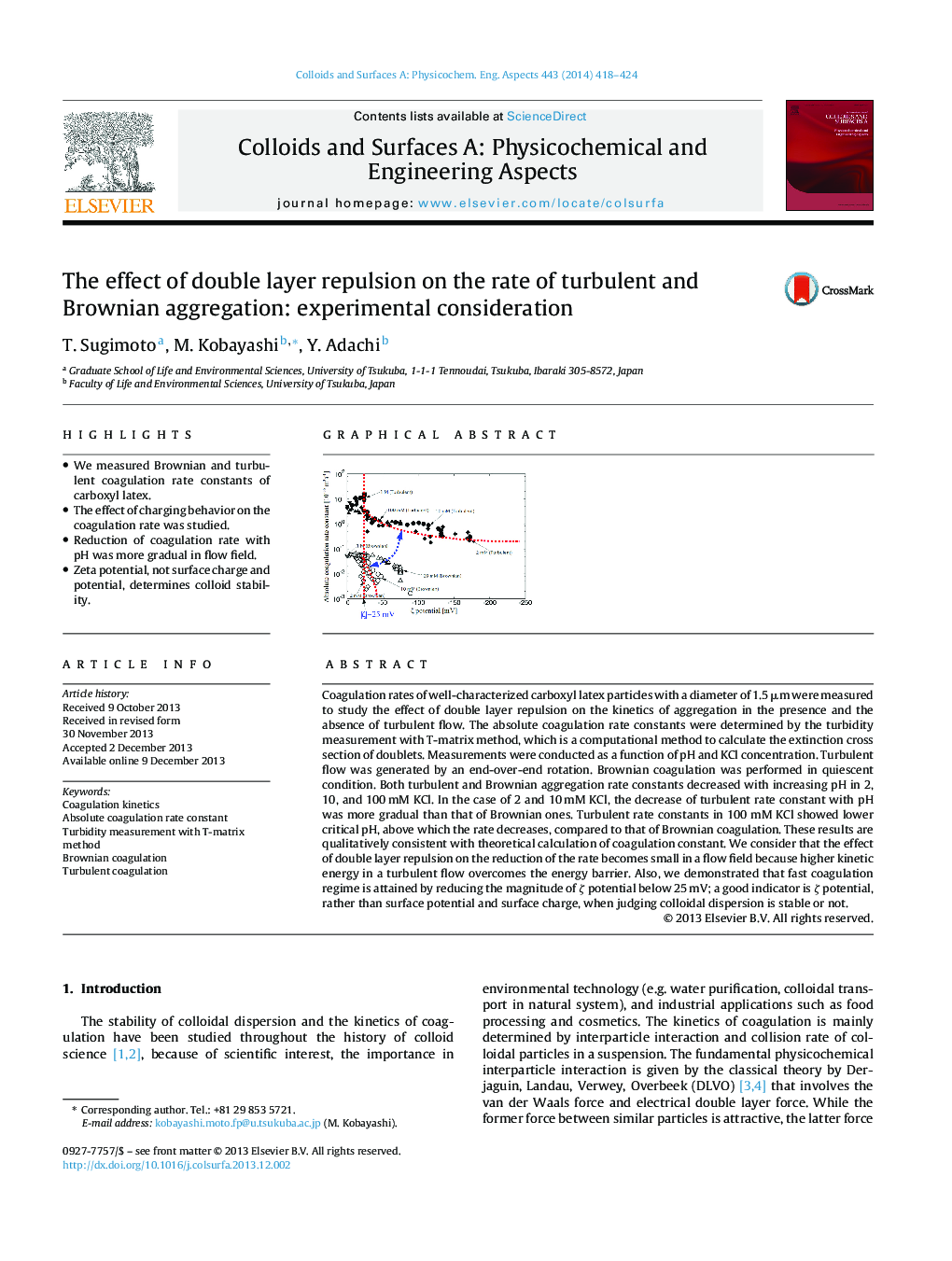| کد مقاله | کد نشریه | سال انتشار | مقاله انگلیسی | نسخه تمام متن |
|---|---|---|---|---|
| 593016 | 1453930 | 2014 | 7 صفحه PDF | دانلود رایگان |
• We measured Brownian and turbulent coagulation rate constants of carboxyl latex.
• The effect of charging behavior on the coagulation rate was studied.
• Reduction of coagulation rate with pH was more gradual in flow field.
• Zeta potential, not surface charge and potential, determines colloid stability.
Coagulation rates of well-characterized carboxyl latex particles with a diameter of 1.5 μm were measured to study the effect of double layer repulsion on the kinetics of aggregation in the presence and the absence of turbulent flow. The absolute coagulation rate constants were determined by the turbidity measurement with T-matrix method, which is a computational method to calculate the extinction cross section of doublets. Measurements were conducted as a function of pH and KCl concentration. Turbulent flow was generated by an end-over-end rotation. Brownian coagulation was performed in quiescent condition. Both turbulent and Brownian aggregation rate constants decreased with increasing pH in 2, 10, and 100 mM KCl. In the case of 2 and 10 mM KCl, the decrease of turbulent rate constant with pH was more gradual than that of Brownian ones. Turbulent rate constants in 100 mM KCl showed lower critical pH, above which the rate decreases, compared to that of Brownian coagulation. These results are qualitatively consistent with theoretical calculation of coagulation constant. We consider that the effect of double layer repulsion on the reduction of the rate becomes small in a flow field because higher kinetic energy in a turbulent flow overcomes the energy barrier. Also, we demonstrated that fast coagulation regime is attained by reducing the magnitude of ζ potential below 25 mV; a good indicator is ζ potential, rather than surface potential and surface charge, when judging colloidal dispersion is stable or not.
Figure optionsDownload as PowerPoint slide
Journal: Colloids and Surfaces A: Physicochemical and Engineering Aspects - Volume 443, 20 February 2014, Pages 418–424
